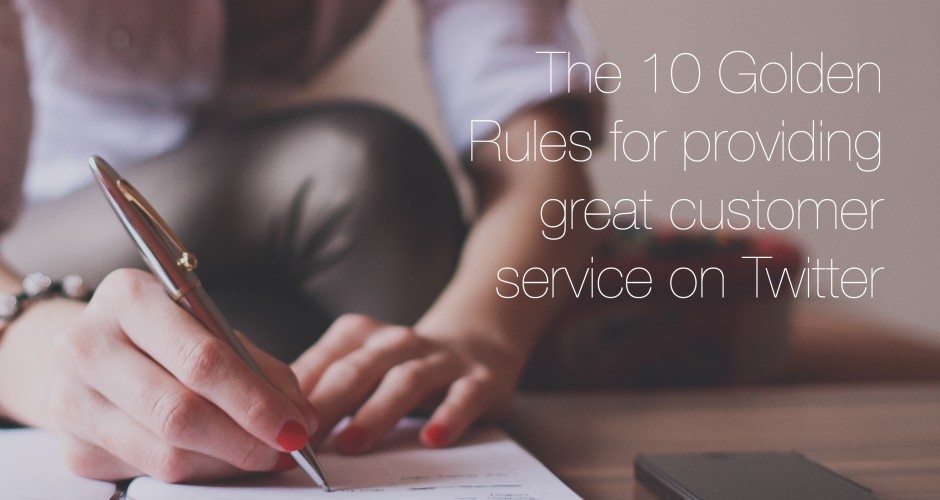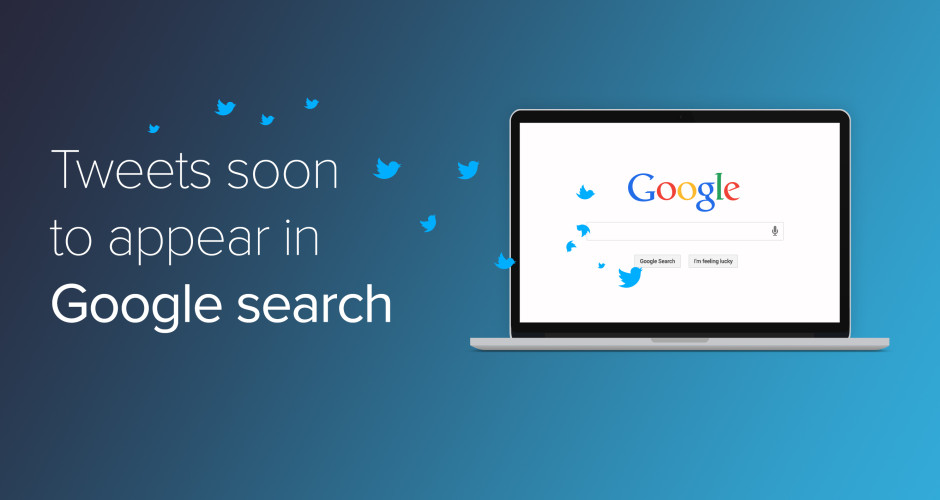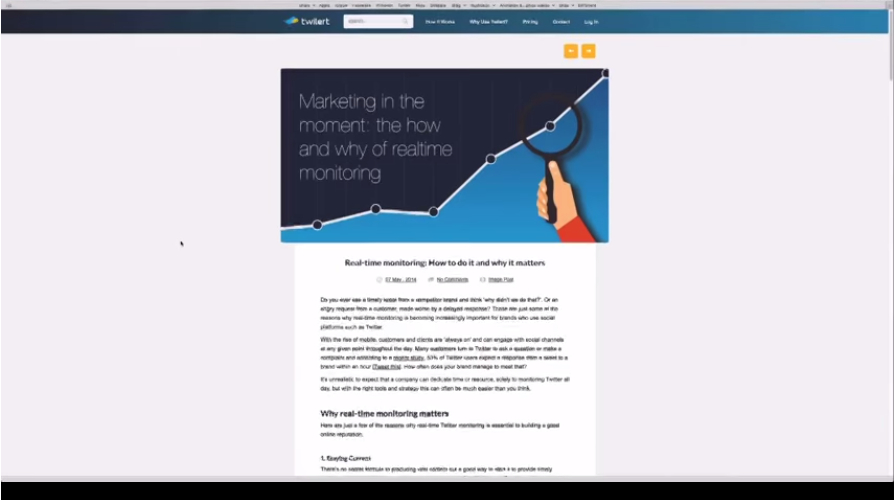10 Golden Rules for Providing Customer Service on Twitter
As you might expect with a Twitter Monitoring tool, the majority of our customer service occurs on Twitter. A tweet is often the first thing that alerts us to a customer query and this means we have to be ‘always on’ to ensure that we are providing the best customer service possible. A recent study from Simply Measured showed that we are not alone – the number of people using Twitter to contact customer service has increased by 44% since the same time last year. If this is the case, then it’s extremely important for brands to ensure that they have the infrastructure and support system in place to provide the same great level of customer service on Twitter, as they would on more traditional channels. If the ‘social media side’ of customer service is something your brand has thought little about, then don’t worry – we can help. Follow this 10-step guide, to ensure you are providing great customer service on Twitter, as well as everywhere else.
1. Listen to your customers
When a customer turns to Twitter, it’s usually to get the company’s attention. The best response you can give them is to listen. Create a social listening plan to ensure that there is always someone available to pick up the mentions. One of the most common mistakes brands make is to leave the customer waiting while they investigate the issue. You might be doing everything you can to rectify the situation but unless you respond to the customer, how will they know that? It’s always better to send a holding tweet than nothing at all. Something as simple as: ‘Hey, Thanks for getting in touch – let me look into this for you’ is fine as a first stage response. Just knowing that you are listening and responding is often enough to keep a customer calm and happy, while you resolve their issue.
2. React to their queries
When a customer takes the time to tweet you a question or query – make sure you respond. Follow up with as much information as you are able to give and try to make sure they are fully satisfied before you write the case off as closed. The brands that provide the best customer service are the ones that go above and beyond. Even if your product or service can’t provide what they’re asking for, don’t be afraid to suggest an alternative. This will show that your first priority is to help fulfil their needs.
3. Listen for all mentions
Customers will often tag the wrong Twitter handle in a tweet, or sometimes not tag a Twitter handle at all – particularly if the tweet has been sent hastily or in anger. Pre-empt this by setting up Twitter monitoring to look out for mentions that contain firstly, your Twitter handle, secondly your brand name and lastly, any common misspellings/slang terms for your brand name. For example, if you were monitoring for mentions of London Fashion Week , you could use the search:
“London Fashion Week” OR #LFW OR @LondonFashionWk
Top tip: Use Twilert to set this up as an email alert that comes directly to your inbox either hourly or in real time, to ensure that you can react quickly to all mentions
4. Give great customer service to everyone
Don’t just help customers who tweet you directly on Twitter – aim to help anyone you can, even if they’re not yet a customer. Many people turn to Twitter to ask questions or search for help and if there’s a possibility they could use your product or service in the future, feel free to reach out and help them too. Setting up an advanced search, can be a great way to help you find leads and customers, helping to increase the number of interactions you have with potential customers.
5. Give users information before they ask for it
If you are experiencing an error with your product, service, email or phone line, try to send a tweet out as soon as possible. Many customers will head to your Twitter page as a first port of call and if they can see that you know about the issue and are dealing with it, they won’t bother tweeting about it. Many brands are fearful of doing this and worry that they will lose face, but it’s often better to hold your hands up, than it is to hide away. This also saves you time on customer service so that you can direct all of your energy towards getting the problem solved as quickly as possible.
6. Ensure the information you give is correct
Check, double check and check again any tweets you send out to users. Broken links and incorrect information will only annoy users and provide a negative experience. Only give a deadline for an issue to be resolved if you are 100% sure you can meet this. Users will only expect an instantaneous fix if you have promised them one.
7. Be honest
Don’t ever try to tell a white lie to a customer on Twitter. They will know and could call you out on it. It’s always better to be completely honest and upfront about any issues or errors, even if it feels a bit painful. Users will appreciate your honesty and will respect your brand much more then if you try to lie.
8. Respond quickly
This study shows that 53% of Twitter users expect a response within an hour when they tweet a brand to ask a question. This rises to 72% when the tweet is a complaint, indicating that the clock is ticking if you want to provide a positive customer service experience. Auto-replies are out if you’re looking to build up a natural rapport with your customer, so you will need to employ a system that helps you to monitor tweets and respond to tweets. Some users find Tweetdeck to be a convenient tool as you can preset your columns for the tweets you want to monitor and then check back on them throughout the day. You could also employ our tool, Twilert, which allows you to setup email alerts in realtime, or on an hourly/daily or weekly basis, so that the mentions arrive directly to your inbox without you having to look for them.
9. Monitor out of hours
Twitter isn’t contained within business hours, so if you have a Twitter presence, you’ll need to create a strategy for monitoring the account outside of hours. Try to split this across across team members and timezones where you can, so that no one person is burdened with keeping a check on things 24/7. If it isn’t feasible for your brand to respond to tweets at evenings and weekends at all, consider employing an ‘opening hours’ system, such as the one used by Greater Anglia train services, so that your customers know what time you’ll be back to answer their questions.
10. Give back
Customer service isn’t always about dealing with complaints and issues, sometimes users tweet you because they want to tell you how great you are! Make sure you thank every user who takes the time to mention you. Regularly engage with brand advocates who recommend you on Twitter and tell them how much you appreciate their support. These users are the salespeople that you don’t have to pay, so they deserve your attention as much as those who complain.
What do you think? How much of your customer service happens on Twitter? Is it difficult to manage the queries while keeping your brand’s reputation in-tact? Comment below and let us know!





No Comments